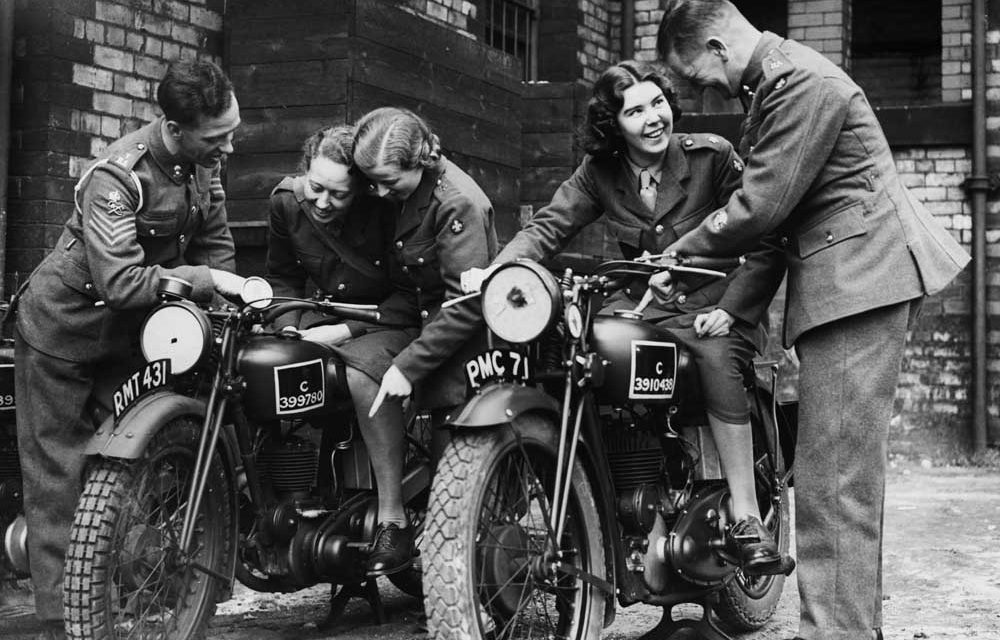Hello to you all,
Does anyone have a picture or dimensions of the bracket which extends the seat nose upwards on the Royal Enfield WD/CO? I had to buy a new Lycett seat for my WD/CO/B, but the springs I have are too long and hence the seat tilts you forward uncomfortably. I have some shorter springs, but this would cause the pillion seat to be pushing into the base of my spine, so I think raising the seat nose would be better.
Many thanks,
Tom
email (option): tomillward@hotmail.com
Tom the Royal Enfield saddles are fairly unique. They all seem to have a large 'D' shaped plate on the front. They don't have any brackets on the nose. Just a pair of holes through the frame.
Here is a factory drawing and a shot of mine which you can make out the nose pivot. Ron


email (option): ronpier@talk21.com
WD/CO saddles:
Contract C/11081 motorcycles (first WD/CO contract) either had a Terry saddle, or a Dunlop. The difference with the WD/C saddles is the fact that kneepads have now been added to protect the knees of the pillion rider. Due to the rubber shortage the Dunlop saddle was no longer listed in the C/13869 and C/13870 catalogues, only the Terry saddle was fitted to these contracts. The Terry saddle is the one that Ron described in the previous post.
According to the contract C/12425 parts catalogue (dated January 1944), the new “standardised WD saddle” (produced by Terry and Lycett) was introduced for this contract, which was produced between August ’43 and June ’44.
The contract C/12425 parts catalogue also lists a “saddle pivot bracket”, and two extra long spring studs. The purpose of these mounting extensions is illustrated in two pictures from the REOC Archives. It looks as if the pillion seat was changed together with the introduction of the “standardised saddle”, and some riders may have hit the hard edge of the pillion seat with their back. In an attempt to remedy this painful problem Enfield must have experimented with a higher saddle position. Strange however that the RAF contract C/S14219 also shows this extension, although these RAF motorcycles weren’t equipped with a pillion seat. The contract S/1546 spare parts list doesn’t mention the saddle mounting extensions anymore.


email (option): wd.register@gmail.com
What a lash up that later arrangement is!...:laughing: ...Ian
email (option): ian@wright52.plus.com
Thanks gents,
Looking at the pictures I hadn’t realised that the original short springs are retained and mounted to longer saddle posts. It’s clear to see why they needed to change the saddle height, that pillion saddle would have hurt like hell the first bump you hit. As well as the Voltage control box hitting you in the arse! I have the Dunlopillow style pillion saddle, I think I will use the shorter saddle springs as per the earlier models.
email (option): tomillward@hotmail.com
Looking at the pictures I hadn’t realised that the original short springs are retained and mounted to longer saddle posts. It’s clear to see why they needed to change the saddle height, that pillion saddle would have hurt like hell the first bump you hit. As well as the Voltage control box hitting you in the arse! I have the Dunlopillow style pillion saddle, I think I will use the shorter saddle springs as per the earlier models.
email (option): rewdco@interia.pl
Hello Tomasz,
It is good to know another Royal Enfield owner. A previous Royal Enfield of mine was frame no M20495, so not far from yours. A picture and dimensions of your bracket would be very helpful, thank you.
Regards,
Tom
email (option): tomillward@hotmail.com
It is good to know another Royal Enfield owner. A previous Royal Enfield of mine was frame no M20495, so not far from yours. A picture and dimensions of your bracket would be very helpful, thank you.
Regards,
Tom
https://ibb.co/hcFGq6v
https://ibb.co/1dKjRf1
https://ibb.co/tmsYc7s
https://ibb.co/W5qbzJR
email (option): rewdco@interia.pl
It is good to know another Royal Enfield owner. A previous Royal Enfield of mine was frame no M20495, so not far from yours. A picture and dimensions of your bracket would be very helpful, thank you.
Regards,
Tom
https://ibb.co/hcFGq6v
https://ibb.co/1dKjRf1
https://ibb.co/tmsYc7s
https://ibb.co/W5qbzJR
If necessary, I will correct it. Sorry for my english i use translator.
email (option): rewdco@interia.pl
